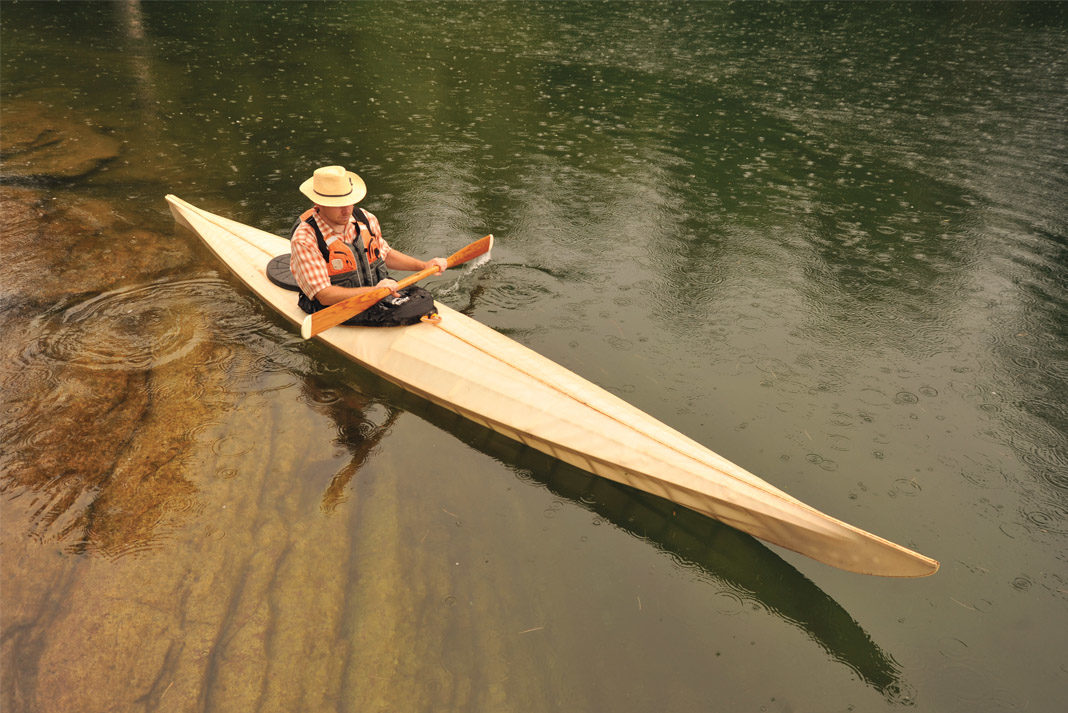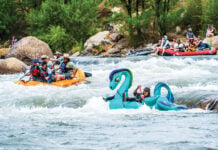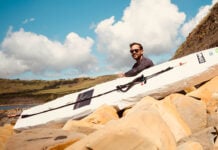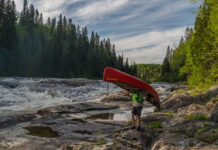Two years ago, Jon Babulic had a successful career in construction management and hadn’t taken more than a week off since graduating university.
When his company restructured and offered him an out, the 43-year-old Guelph, Ontario resident decided it was time for a vacation.
“I figured I’d take the summer off, then go back to work in the fall,” recalls Babulic. In just a few short months, he estimates he canoed, kayaked, sailed and fished some 2,500 kilometers. “I paddled like a lunatic,” he chuckles.
Small boats are in Babulic’s blood. Growing up on Lake Superior, he would borrow his father’s kayak, a 1980s Perception Dancer whitewater design. By age 8, he remembers fellow cottagers gathering on the beach to watch father and son surf the crashing waves. He’s even more at home in canoes, trolling for lakers or seeking out remote fishing holes.
During that first summer of freedom, Babulic wished for a lightweight solo canoe he could transport easily into the backcountry. “But I couldn’t get my head around spending $4,000 on a Kevlar boat. And I wasn’t in love with any of the shapes, so I decided to build my own.” It’s not as crazy as it sounds. Babulic already had the necessary woodworking skills, a hobby he learned making bamboo fly rods.
Browsing Pinterest one rainy afternoon, Babulic spotted a skin-on frame design and immediately saw the lightweight advantage of this construction method. The final piece fell into place when Babulic stumbled across an open-source naval architecture program from the Massachusetts Institute of Technology.
Babulic built his first skin-on-frame canoe in just four days. The result was lightweight and strong, and even better, “it paddled like a real canoe.” Over the next year, he “built and paddled, then built and paddled some more.” Everywhere the builder and his eye-catching creations went, people admired the translucent hulls.
Babulic realized he had the makings of a new career
“I thought, ‘What the hell,’” he laughs, and Backcountry Custom Canoes was born. Last year, Babulic built some 20 canoes and half a dozen sea kayak prototypes. The Backcountry Custom Canoes website lists three broad categories: solo canoe, tandem canoe and sea kayak.
Within these parameters, however, his designs are infinitely customizable. “The beauty of skin-on-frame construction is that I can build any shape imaginable,” he says, “creating a truly custom boat that’s fitted perfectly for you.”
Babulic’s boat design process
Typically, it begins with a discussion about how the kayak should look and paddle, informed by the customer’s preferences and other boats they enjoy. “You could tell me, ‘I want a Romany-style kayak with three hatches and a rounded chine, but a bit shorter with a little less rocker, and I want it to be half the weight,’” he explains. “Then I take your measurements, shape the wood around you, and build it to fit.”
He uses Douglas fir for the stringers and longitudinal pieces, and sturdy black ash for the steam-bent ribs and cross members. Ribs are pinned in place with bamboo skewers, glued and tied to the stringers with nylon. The completed frame is then spray-coated with urethane varnish and is ready for the final—and most tedious—step: skinning.
Along with the painstaking process of laminating the cockpit coaming, this is Babulic’s least favourite part of the build. It takes three days to hand-sew the sheets of ballistic nylon around the frame. He then finishes the skin with urethane and adds epoxy “skid plates” to high-wear areas.
Each one of Babulic’s kayaks takes two weeks to construct
A 30-pound, 17-foot base model starts at $3,000 Canadian. Along with the unique aesthetic and considerable weight savings compared to composites, he insists his skin-on-frame boats are tougher than most hardshell kayaks. If you run into something, the skin flexes to absorb the impact, he explains.
Any damage can be repaired with contact cement, and heavily abused hulls can be re-varnished or even re-skinned as needed. Durability and longevity aside, “They’re really fun to paddle,” he says, “a crossover between organic wooden boats and more modern shape and performance.”
The kayak Babulic dropped off at the Adventure Kayak offices is one he designed for his 72-year-old, 6’2”, 250-pound father, “so Dad could go surfing again.” The elder Babulic is a former middle linebacker in the Canadian Football League and, as his son explains, “He surfs like a guy who played for the Saskatchewan Roughriders in the ‘70s.” In other words, “It’s a tank!” Babulic admits with a laugh.
At the opposite end of the spectrum is a prototype he calls the Needle. It’s a race-inspired design that borrows traits from Epic surfskis and Rockpool Kayaks’ speedy Taran. “I wanted to experiment with form, to see if I could take a thousands-of-years-old technique and make a modern surfski,” he says. “The ultimate combination of old and new.”
To paddle a Backcountry Custom Canoe design is to return to the ancestral origins of kayaking: each boat built for a specific person, with attention to where and how he or she will use it.
This article originally appeared in Issue 51 of Paddling Magazine. Subscribe to Paddling Magazine’s print and digital editions here, or browse the archives here.









